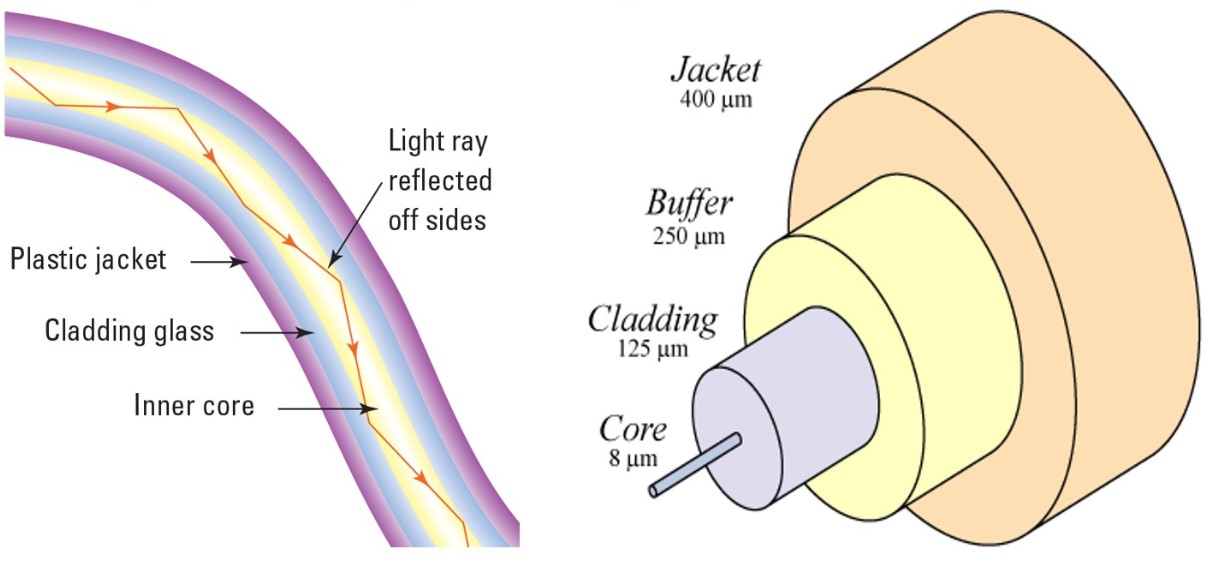Travelling Light In Tubes
So far, we have examined the principles of the scattered laser light in the cable; but what about the cable itself? How do we protect the ultra-thin glass fiber? What are fibers made of? Well, the optic fibers are made of either transparent plastic or glass, so that the light can travel inside the tube. On top of that; there is another layer which is called “the cladding”. The cladding is also either glass or plastic; but it is made of a different density than the inside cable which is called the core. The aim here is that, the light should bounce off the cable in a zig zagging way to travel inside the core according to Snell’s Law. It has a lower refractive index than the inner core so light does total internal reflection with minimum signal loss. This loss is different for every wavelength and it is particularly emphasized over long distances, so considering these losses the optimum wavelength for use is 1550 nm.

Figure 1. The first is inner workings of an optic fiber. The second are the layers.
The outer layers of the cable are twofold. The first layer above the cladding is called “the buffer” which is there to protect the cable from moisture and damage. Last but not least, there is “the jacket” which protects the whole structure and also makes it possible to use the fiber without breaking it. These outer layers are made of metal or polymer. In Figure 2 we see how light travels inside as well as the layered structure of the fiber optic cable.
So, what do we do with DTS?
We have seen how the light travels and how we measure DTS; now comes the question: “Where do we use DTS? What good it is for the industry?”
DTS is used in monitoring big structures for maintenance, in oil and gas industry it is mainly used for detecting leakage from pipes; it can also be used to watch undersea power and gas cables for anchor damage. Another nice application is detecting fires and preventing forest and building damage. This technology can also be used in mines to detect dangerous gases and alert the user.




